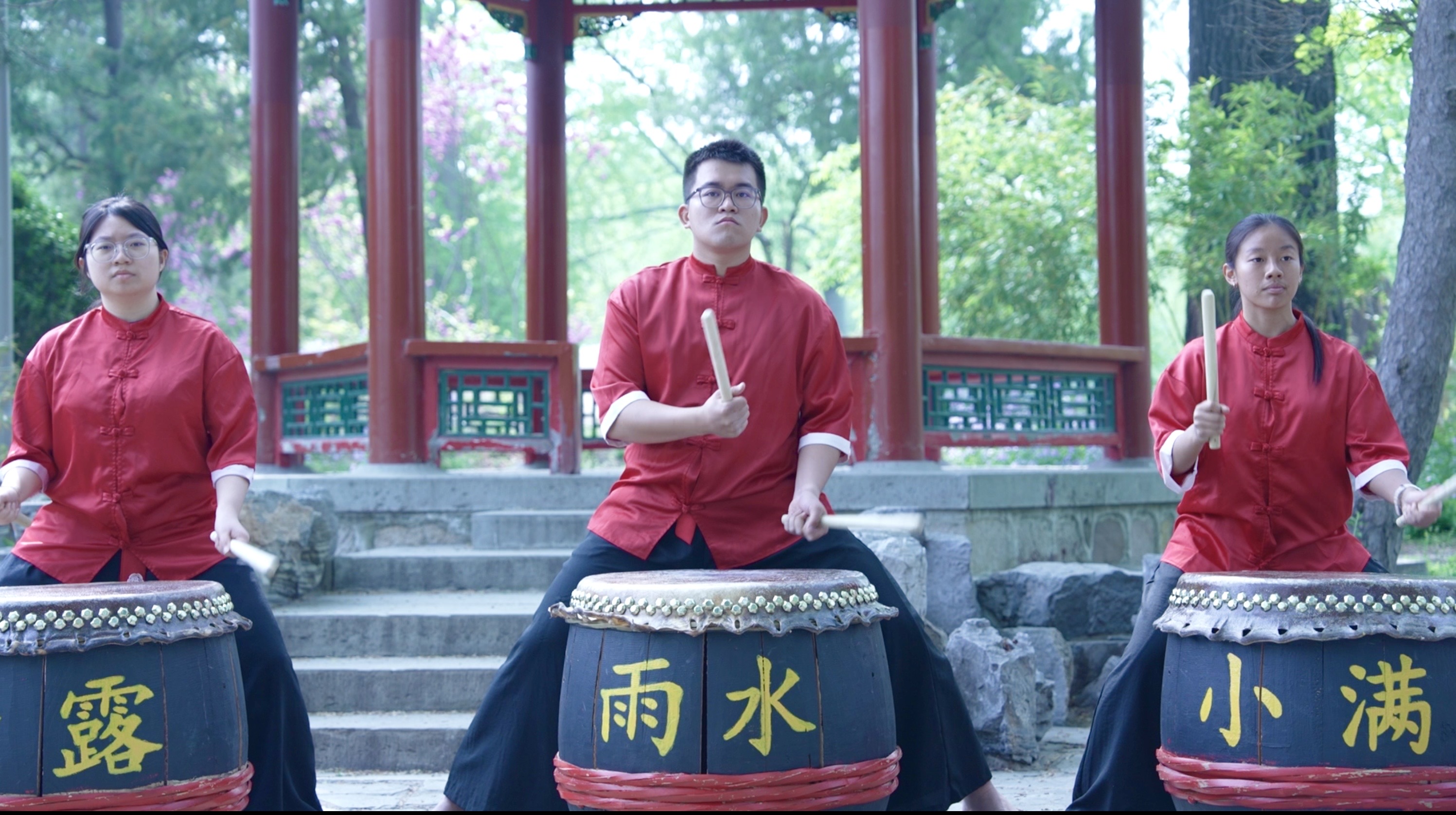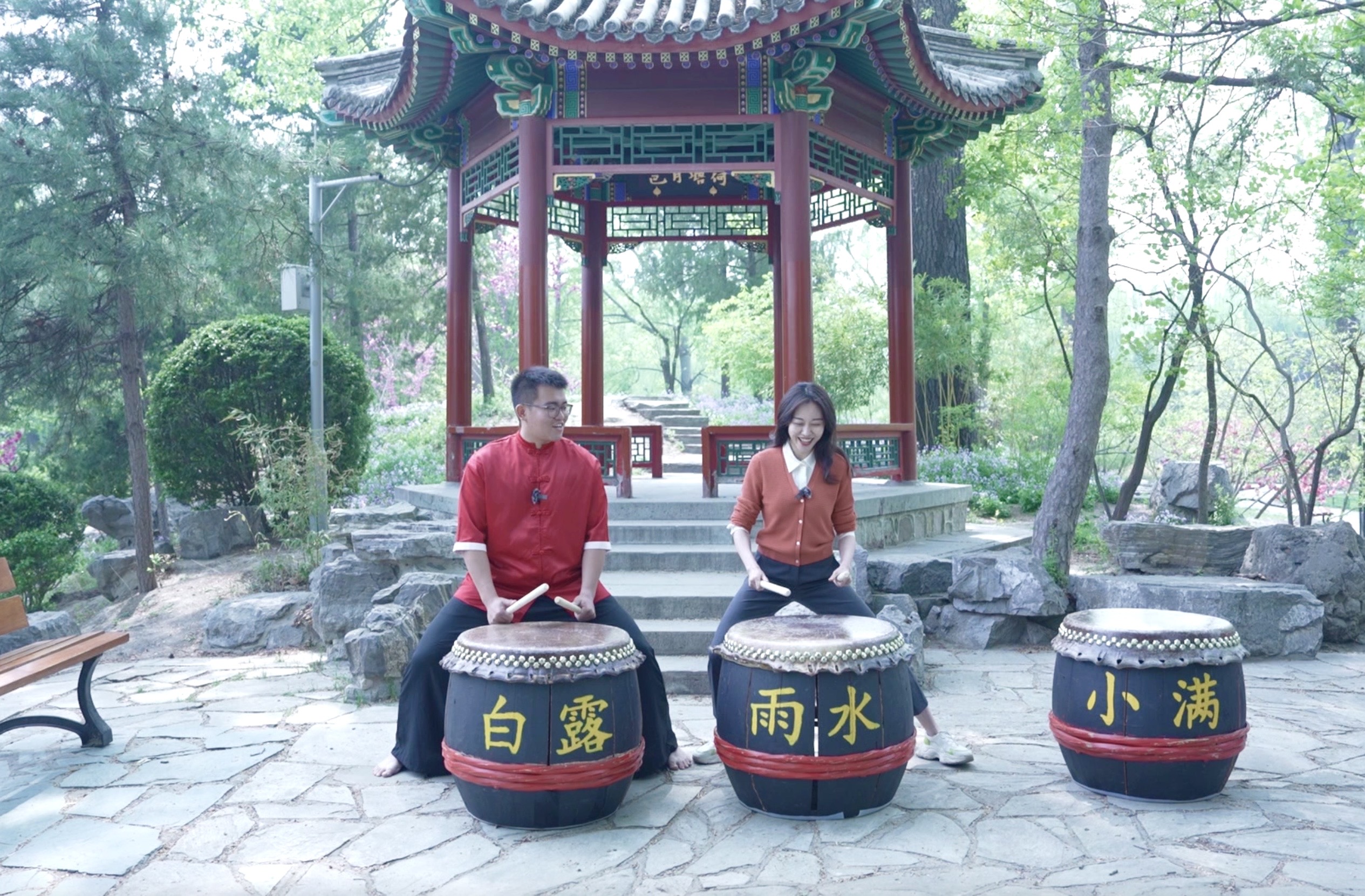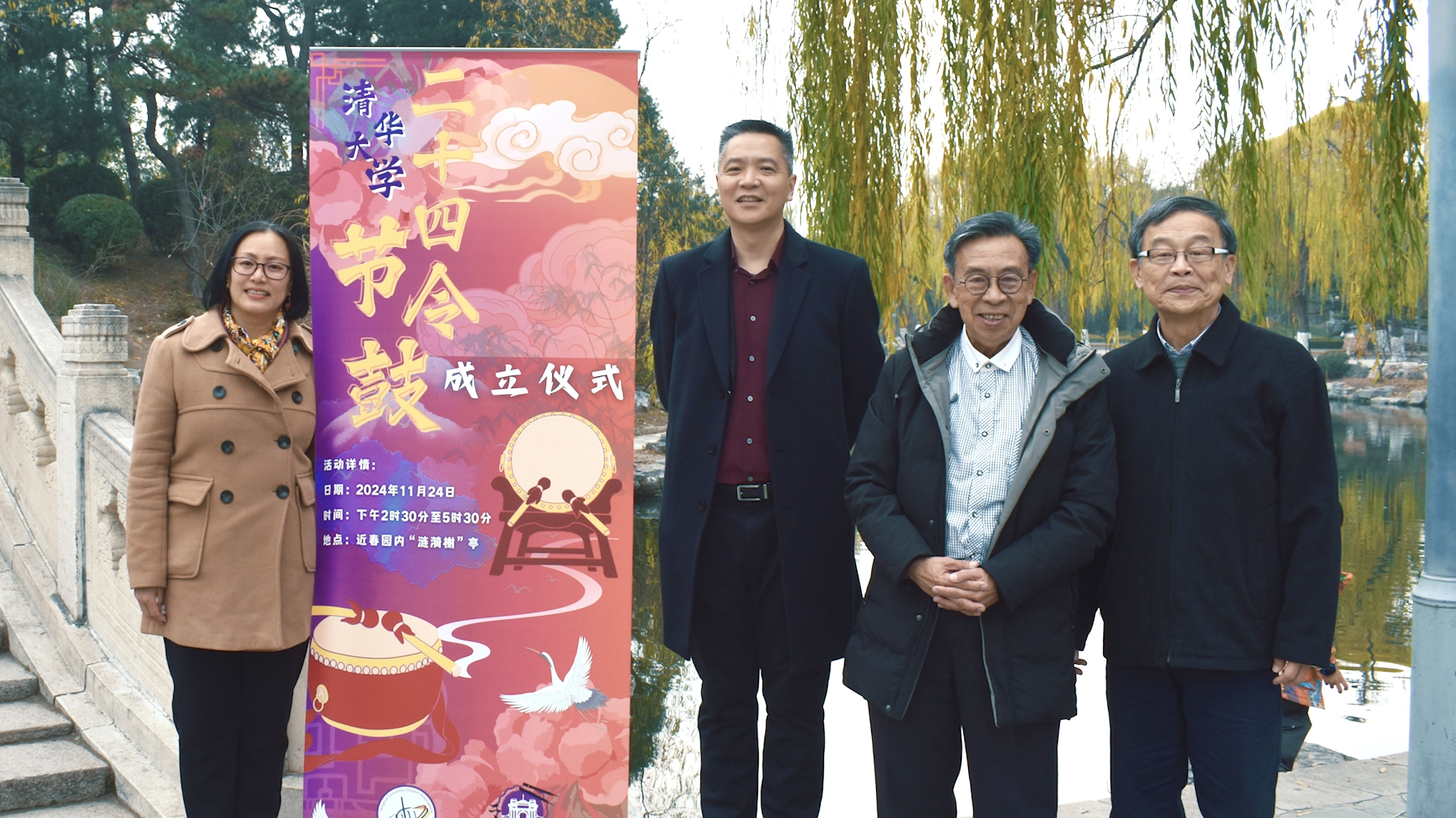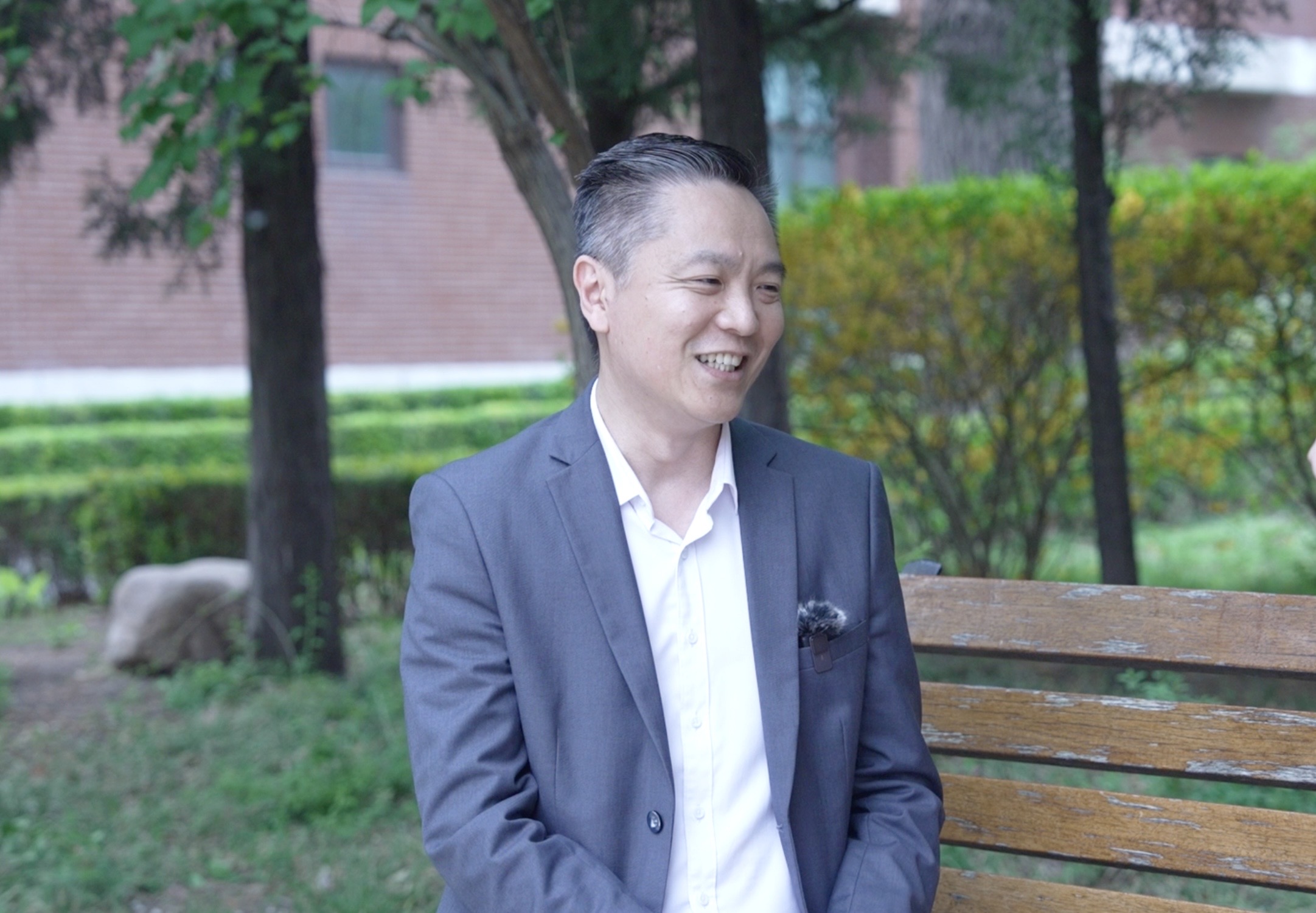
The bond between China and Malaysia runs deep.
And today we hear it in the beating of drums.
Across the campus of Tsinghua University, a group of young people is performing the 24 Festive Drums—a unique art form born in Malaysia.
Some are from China, some from Malaysia. But together, they’re writing a new chapter of friendship—using rhythm as their language, and culture as their bridge.
Now, here’s Guo Yan at Tsinghua University, where the rhythm of drums tells a story of unity, tradition, and shared heritage.

Student drummers perform the 24 Festive Drums at Tsinghua University in Beijing, April 11, 2025. [Photo: CGTN Radio]
Barefoot, in deep red tunics and black sashes, the drummers of Tsinghua’s 24 Festive Drums team stand in formation.
They strike the face, sides, and rims of the drums with powerful energy.
The Tsinghua team was founded in November 2024. It now has 30 members—20 from Malaysia, 10 from China.
Some are seasoned performers. Others are just starting.
But they beat in sync—with a shared passion for rhythm, unity, and cultural connection.
“The first time I saw the drumming, I thought it was super cool and really powerful. I instantly loved it.”
“One of our performances was called Resonance. That’s what we hope to share with the audience. This energy of unity, beating as one.”
“I think this is a powerful example of cultural fusion. Our ancestors came from China, we developed the drums in Malaysia, and now we’re bringing them back. It’s a two-way exchange.”

Ng Weidong (left), a Malaysian student at Tsinghua University, teaches a CGTN reporter to play the 24 Festive Drums on campus in Beijing, April 11, 2025. [Photo: CGTN Radio]
Malaysian student Ng Weidong, now pursuing a master’s at Tsinghua, explains the meaning behind the performance.
“It blends Chinese solar terms, calligraphy, and lion dance drumming. Each drum bears a different term like ‘Spring Equinox’ or ‘Rain Water’ It’s like a living calendar of Chinese heritage.”
One of the team’s founding members is Phang Lixian, its first captain.
He began drumming at age nine in Malaysia—and now continues that journey in China.
“This is a cultural homecoming. The 24 Festive Drums have started in Malaysia, but they’re deeply rooted in Chinese traditions. The drums sound like a heartbeat—echoing through the hearts of Chinese communities worldwide.”

Tan Chai Puan (second from right), co-founder of the 24 Festive Drums, and Kee Keh Kooi, professor at Tsinghua University’s School of Medicine, attend the inauguration ceremony of the Tsinghua 24 Festive Drums Team in Beijing, November 24, 2024. [Photo: CGTN Radio]
The man who helped spark that global echo is poet and cultural advocate Tan Chai Puan, who co-founded the 24 Festive Drums in 1988.
For decades, he’s been at the heart of its growth—tirelessly championing the art form and inspiring new generations of drummers.
“I call the 24 Festive Drums ‘Eastern rock music’. It’s traditional— but young people think it’s cool. It’s got power, energy and style. Drumming brings them closer to traditional culture. They discover the deeper Chinese philosophy of harmony between man and nature.”
In 2009, Malaysia recognized the 24 Festive Drums as a national intangible cultural heritage.
For Tan, that recognition isn't just about preserving the past, it's about forging connections for the future.
“To me, drummers are a global family. Whether they’re Chinese, Malay, or African— they find joy and identity in drumming. This shows ancient traditions aren’t fading. They just need new ways to connect with young hearts. “
Since Huaqiao University established the first drum team at in 1997, the 24 Festive Drums have spread across China.
Today, there are more than 100 teams nationwide—most of them driven by passionate young people.

Kee Keh Kooi, a professor at Tsinghua University’s School of Medicine and a native of Malaysia, speaks to a CGTN reporter in Beijing on April 11, 2025. [Photo: CGTN Radio]
“The fact that so many young people want to be part of this tells us just how powerful and alive this cultural tradition is. To me, it represents a living, breathing Chinese heritage—passed down across generations, transcending time and place. It’s a bond of culture that runs deep, like blood ties connecting us all.”
Someone who’s watched this return across generations is Professor Kee Keh Kooi.
He’s a life sciences professor at Tsinghua—and one of the key figures behind this team’s founding.
As a teen, he studied at Foon Yew High School in Johor Bahru—the birthplace of the 24 Festive Drums.
“I’ve had a special bond with the drums since they were created. When I started teaching at Tsinghua, the founder of the art form hoped we could bring the drums here. I felt honored to help make it happen.”
“Every time I watch a performance, I’m deeply moved. The sound of the drums hits straight to the heart—it’s as if the rhythm is carrying the voice of Chinese culture directly into my soul. And I want others to feel that same emotional connection.”
He believes the rise of this art form in China reflects the deepening cultural and economic exchanges between China and Malaysia.
“Beyond the drums, we’re also seeing growing collaborations in higher education and research, as well as trade and business. I believe more uniquely Malaysian cultural expressions will find their way to China—and Chinese culture will continue to travel to Malaysia. This is a two-way exchange that will only grow stronger.”
From Johor Bahru to Beijing, the rhythm of the 24 Festive Drums has crossed oceans.
It carries not only the spirit of Chinese culture—but the pulse of two nations, beating together.
